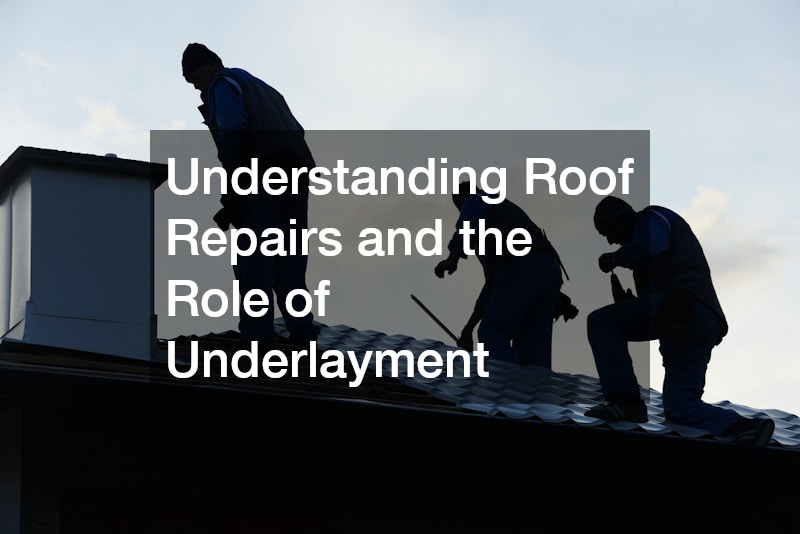In this article, we will explore the essential components of roof repairs with a focus on the critical role of underlayment. Understanding these fundamentals can help homeowners maintain and improve the longevity of their roofs. A well-informed homeowner is better equipped to make decisions that prevent long-term damage.
What is Roof Underlayment and Why is it Important?
Roof underlayment is a protective layer installed between the roof deck and the primary roofing materials, like shingles or metal. Its primary purpose is to act as a barrier against moisture penetration, safeguarding the underlying materials from water damage. The effectiveness of underlayment contributes significantly to the overall durability and effectiveness of a roofing system.
This layer is crucial in preventing leaks and maintaining the interior comfort of a home during adverse weather conditions. By providing additional insulation, underlayment helps in regulating the temperature inside the house and reduces energy costs. Despite often being out of sight, the underlayment ensures the roof performs efficiently across its lifespan.
Not only does it protect against water, but it also serves as a secondary weather barrier that keeps out dust and debris. Homeowners who are aware of their roof’s underlayment are in a better position to prevent costly repairs. Although often overlooked, it is a fundamental aspect that should not be ignored during roof installations and repairs.
There are various types of roof underlayment, including asphalt-saturated felt, synthetic underlayment, and rubberized asphalt. Asphalt-saturated felt is the traditional choice, known for its durability and water-resistant properties. Conversely, synthetic underlayment is gaining popularity due to its lighter weight and superior tear resistance, offering enhanced performance in extreme weather conditions.
Rubberized asphalt underlayment is another option, favored for its excellent waterproof traits and self-sealing qualities around nails. The choice of underlayment material depends on factors such as roof type, local climate, and budget considerations. Each material offers different benefits, matching various roofing needs and specifications.
Homeowners should consider consulting with roofing professionals to select the most suitable underlayment option. Professionals can provide insights based on the specific environmental conditions and architectural requirements. Selecting the right underlayment can influence the roof’s resilience and longevity, highlighting the importance of informed choices.
How to Identify When Your Roof Needs Repair
Recognizing signs of roof damage promptly can save homeowners from extensive future repairs. Common indicators include roof leaks, which may manifest as water stains on the ceiling or walls. Missing, cracked, or curling shingles are also signals that your roof might need attention.
Other signs include visible mold or mildew growth, which can suggest trapped moisture within your roofing structure. Sagging spots or weakened roof sections are more severe indications of urgent repairs needed. Regular roof evaluations can help detect these issues early before they escalate into major problems.
Unusual energy bill spikes might indirectly signal roofing deterioration, as compromised insulation leads to increased heating or cooling costs. Homeowners should remain vigilant for these signs and consider routine inspections. Proactive maintenance can prevent these minor issues from developing into costly repairs.
Can Roof Repairs Be Done Without Replacing Underlayment?
There are instances where roof repairs do not necessitate underlayment replacement. For instance, if the damage is limited to a specific area of shingles with intact underlayment beneath, then a full replacement might be avoided. Spot repairs on roofing materials are feasible without disturbing the underlayment when it remains in good condition.
Another scenario involves scheduling periodic maintenance where minor wear and tear do not extend to the underlayment layer. In such circumstances, repair work can proceed with confidence that the underlying structure remains sound and water-tight. Emergency temporary repairs may also suffice until a proper evaluation is conducted.
However, this approach requires careful assessment to ensure that no hidden damage resides underneath. Homeowners should always seek an inspection to verify the condition of the underlayment before opting out of replacement. Balanced judgment ensures that the roof remains fully equipped to perform efficiently despite repairs.
Comprehending the role of underlayment in your roof system and knowing when and how to address repairs can extend your roof’s lifespan and efficiency. Proper maintenance, informed decisions, and timely professional intervention are key to effective roof management. Homeowners should prioritize regular inspections and seek professional guidance to ensure their roofs remain robust and reliable.




